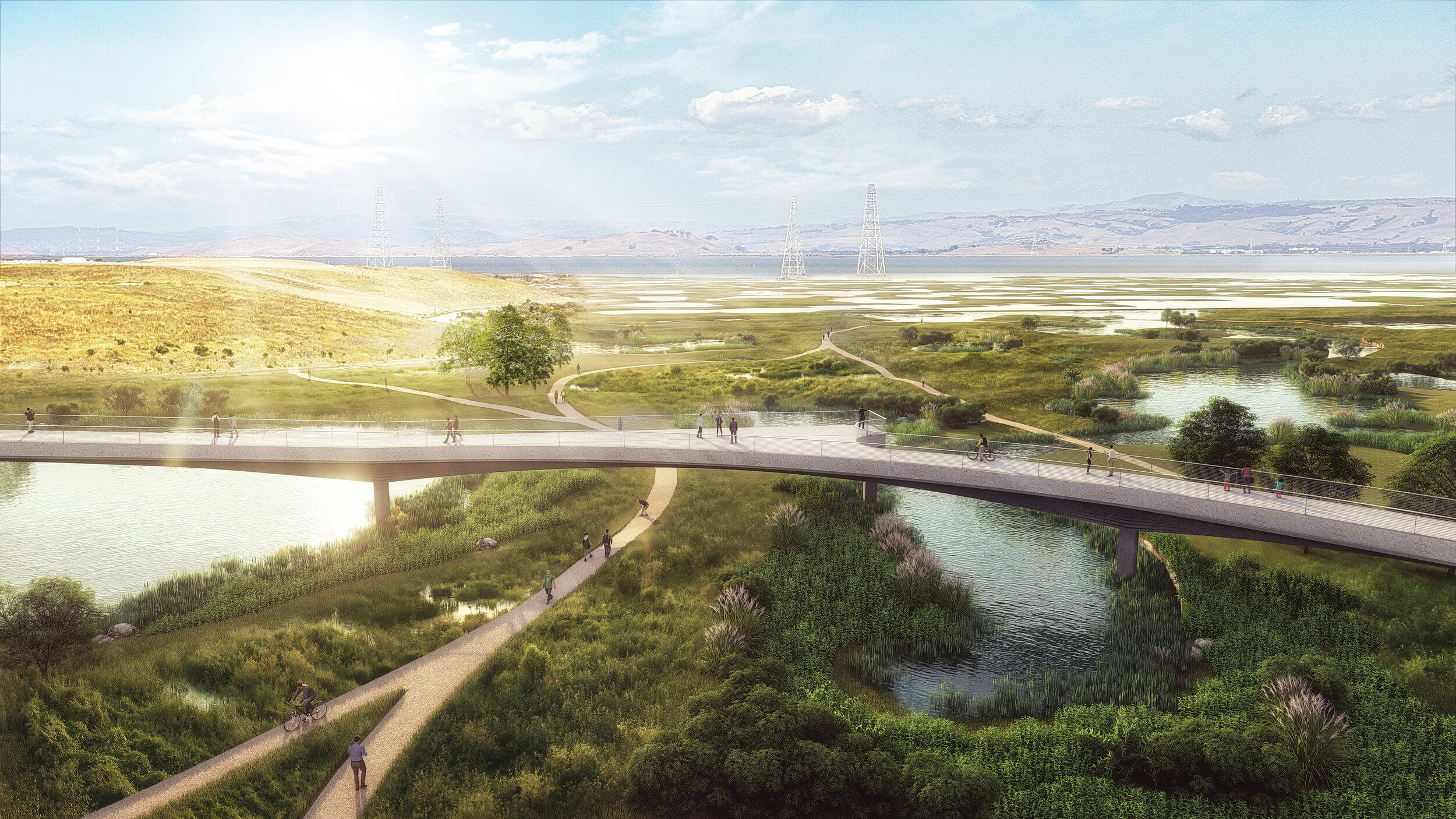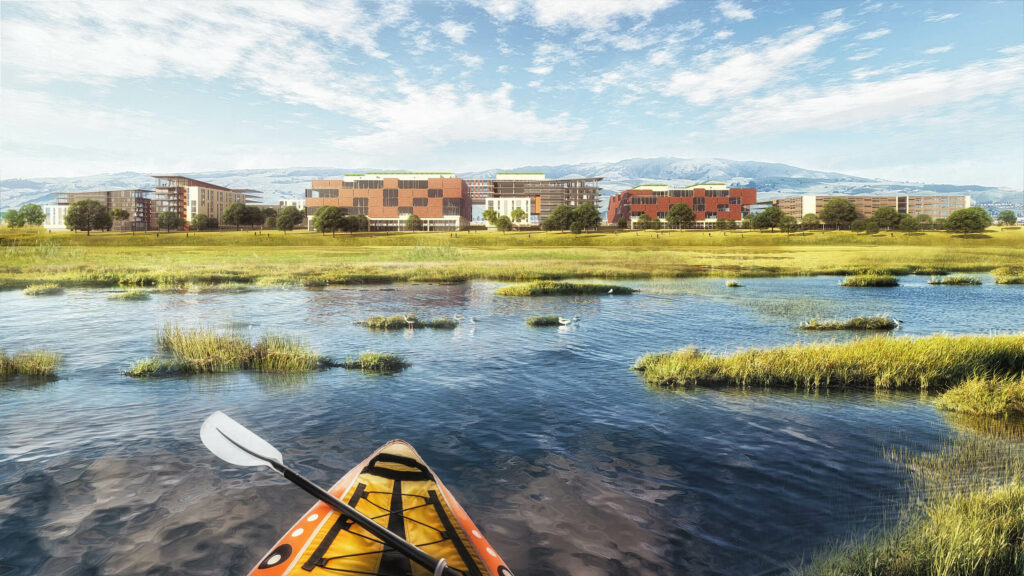The Bay is so many things to so many different people – it is a place of beauty, serenity, ecology, recreation, economy and identity, to name just a few. The Field Operations Team worked closely with the communities in the South Bay and Silicon Valley to shape a vibrant and living framework for adaptation in the face of climate change and sea level rise, envisioning a future where nature and technology work together to improve the resiliency of our cities and towns, our social fabric and our collective health and well-being.
The “Sponge” is a concept for using nature and natural systems as a primary tool for climate adaptation and resiliency in the South Bay, inspired by both the historic function of the region’s inter-tidal marshlands as flood protection, as well as by the remarkable efforts to restore the South Bay Salt Ponds. The potential of a large-scale assemblage of remnant marshlands, newly restored salt ponds and newly constructed wetlands as the core component of a regional flood protection strategy is at once radically innovative, but also resonant with the South Bay landscape today. In addition to addressing climate adaptation, the South Bay Sponge can give the landscapes of the South Bay a powerful and legible identity.
READ THE FULL SOUTH BAY SPONGE REPORT HERE
WATCH THE SOUTH BAY SPONGE FINAL PRESENTATION



 The South Bay Sponge project proposes new framework for cooperation and coordination across jurisdictions in the South Bay. Each municipality would enter a collaborative agreement to define how the region messages, deliberates, prioritizes, acquires funds and implements multi-benefit resiliency projects. The framework may take the form of a Special District – The South Bay Multi-Benefit Resiliency District – whereby a host of funding mechanisms become feasible. This cross-jurisdictional cooperation could all start with something as simple as an MOU between jurisdictions. While the Santa Clara Valley Water District and San Mateo County Flood District already have mechanisms in place to fund components of the South Bay Sponge, it is clear that significant additional funds are required for continuous protection across the region and significant coordination is required to make it all happen.In this way, the South Bay Sponge becomes the idea, the framework and the motivation for this new form of cooperative planning for a more resilient South Bay. There are a variety of ways in which the South Bay Sponge project might continue in the near-term. We have received enormous support from all stakeholders involved, and have had a remarkably successful public engagement process that is a model for messaging, educating and inspiring a broader public. In any scenario, however, specific funding sources would be needed to support further work, whether for continuing the public engagement and education efforts; for continuing project planning and feasibility assessments; for the preparation of a more detailed and implementable pilot project; or, to identify further sources of capital funding.
The South Bay Sponge project proposes new framework for cooperation and coordination across jurisdictions in the South Bay. Each municipality would enter a collaborative agreement to define how the region messages, deliberates, prioritizes, acquires funds and implements multi-benefit resiliency projects. The framework may take the form of a Special District – The South Bay Multi-Benefit Resiliency District – whereby a host of funding mechanisms become feasible. This cross-jurisdictional cooperation could all start with something as simple as an MOU between jurisdictions. While the Santa Clara Valley Water District and San Mateo County Flood District already have mechanisms in place to fund components of the South Bay Sponge, it is clear that significant additional funds are required for continuous protection across the region and significant coordination is required to make it all happen.In this way, the South Bay Sponge becomes the idea, the framework and the motivation for this new form of cooperative planning for a more resilient South Bay. There are a variety of ways in which the South Bay Sponge project might continue in the near-term. We have received enormous support from all stakeholders involved, and have had a remarkably successful public engagement process that is a model for messaging, educating and inspiring a broader public. In any scenario, however, specific funding sources would be needed to support further work, whether for continuing the public engagement and education efforts; for continuing project planning and feasibility assessments; for the preparation of a more detailed and implementable pilot project; or, to identify further sources of capital funding.